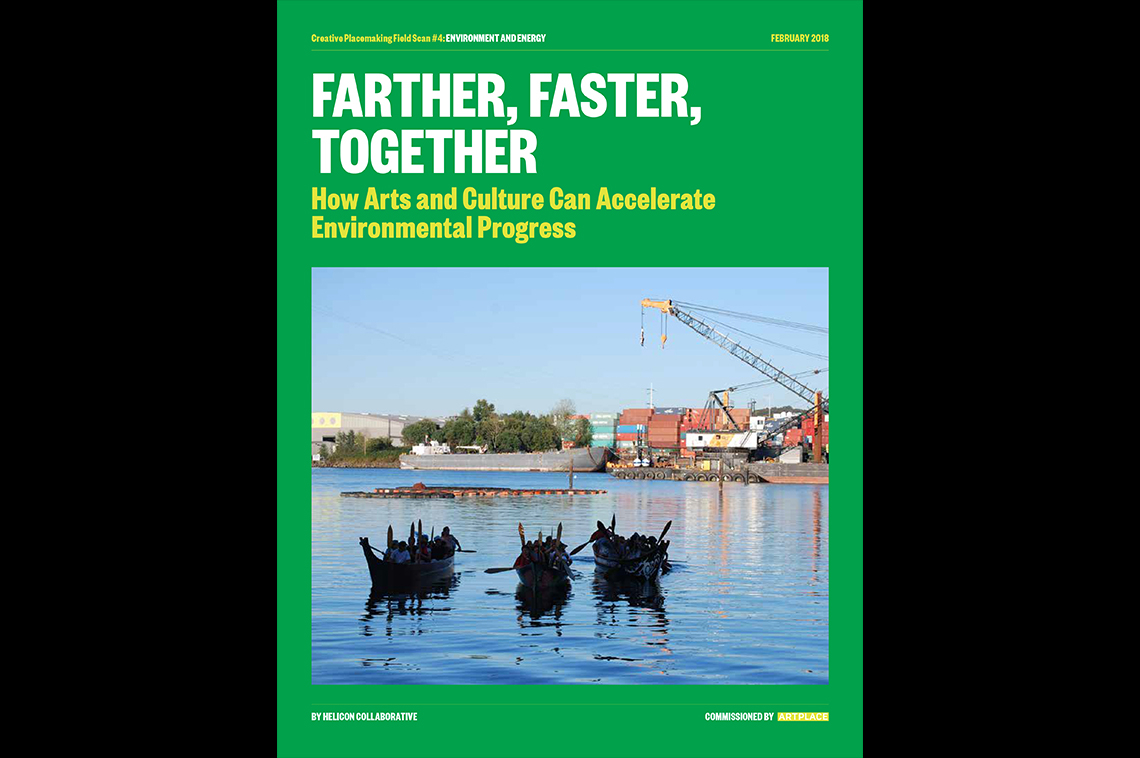
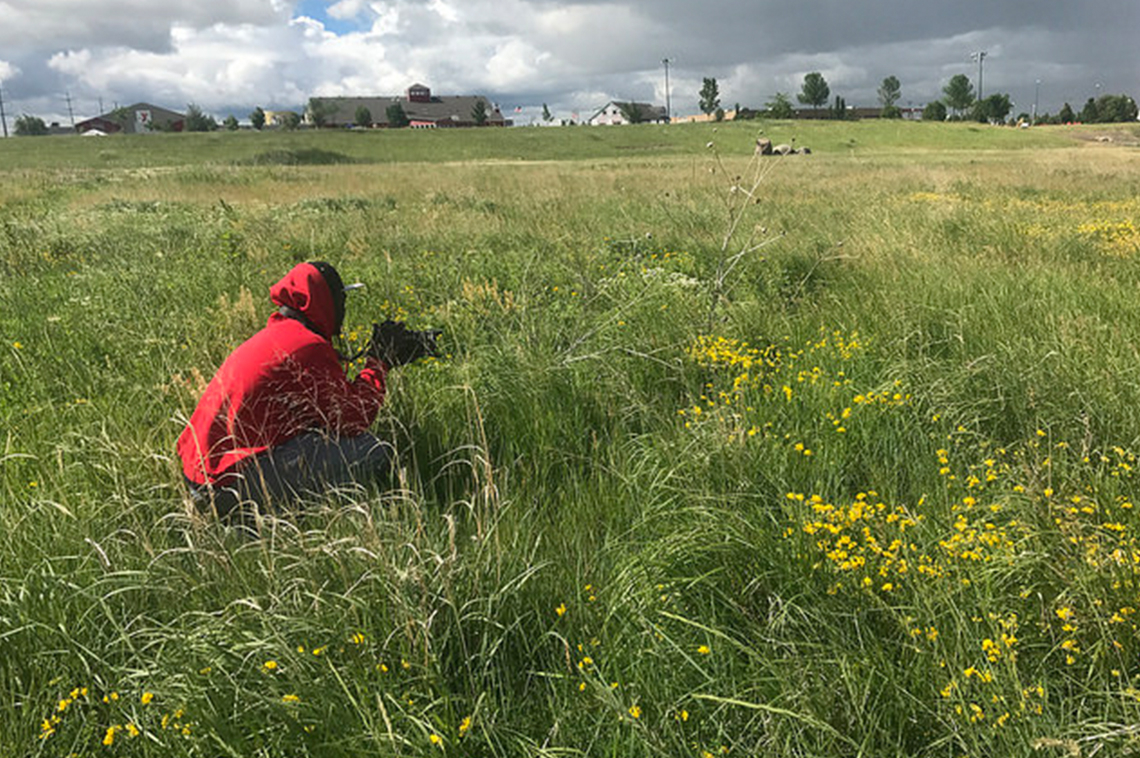
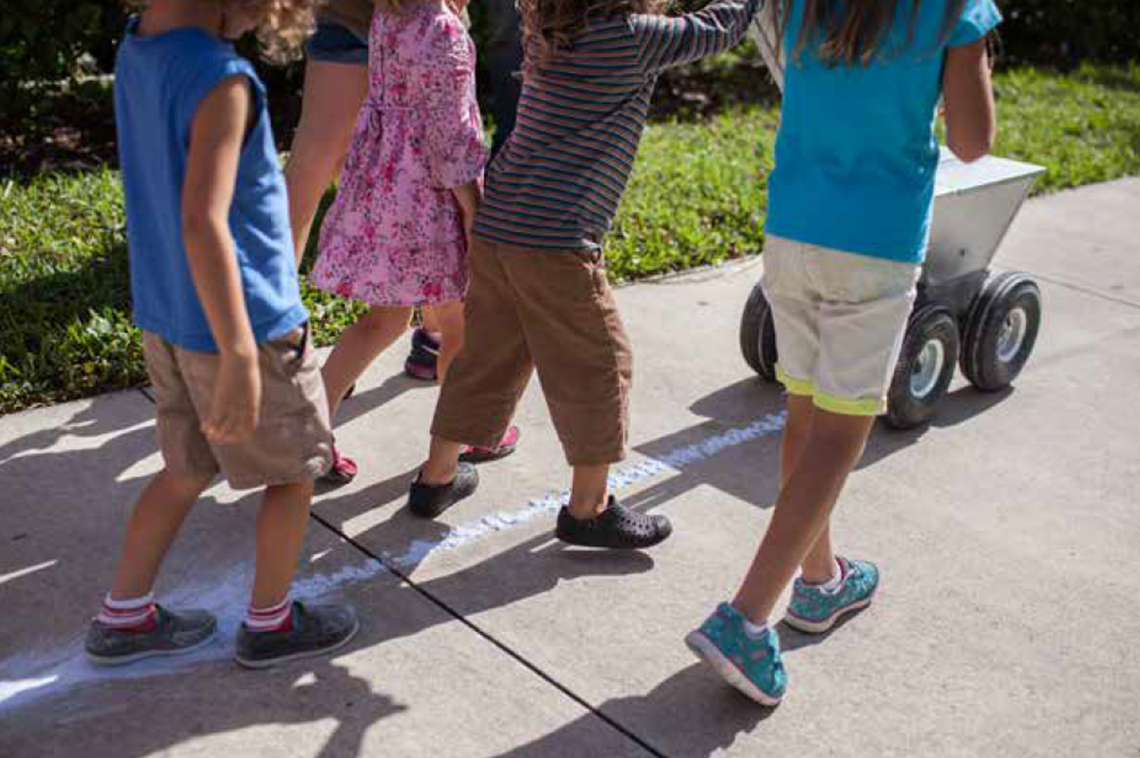
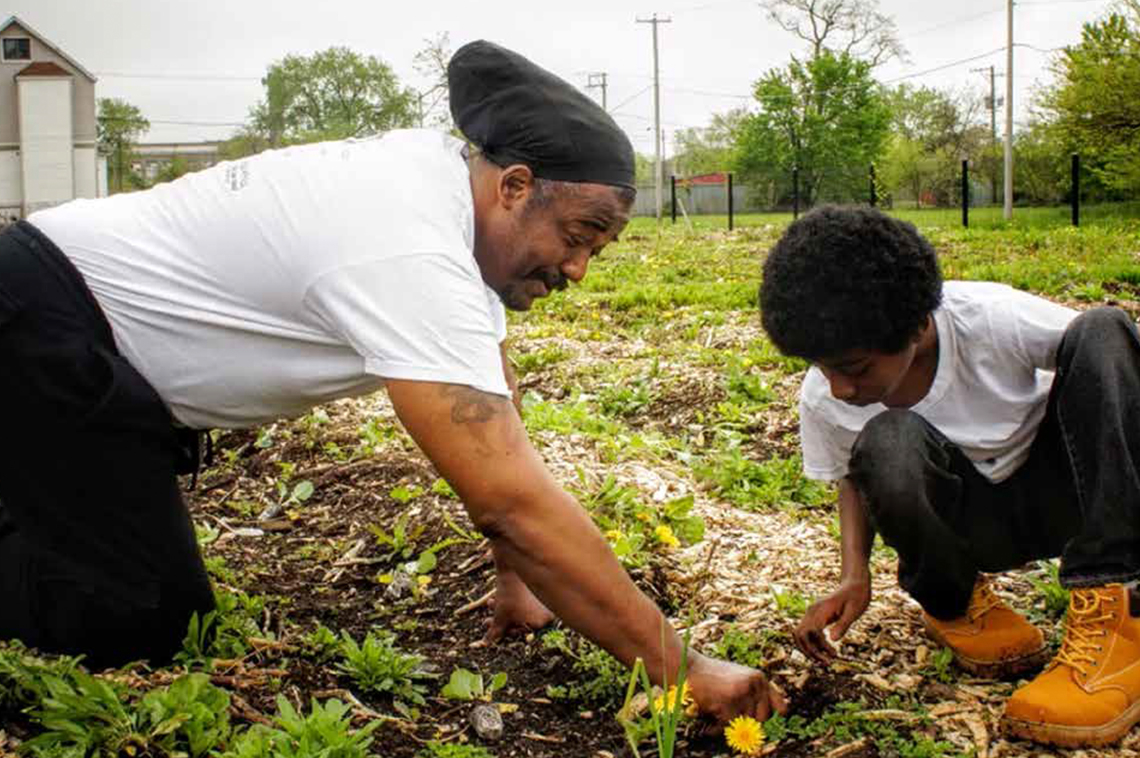
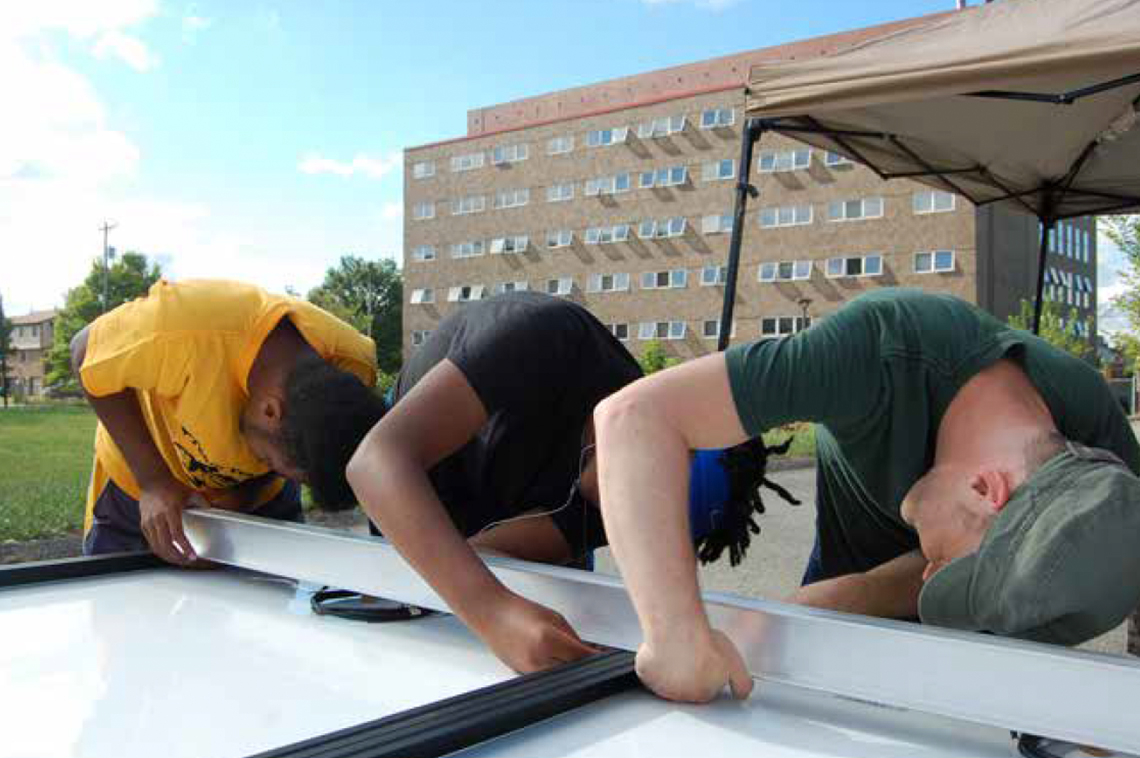
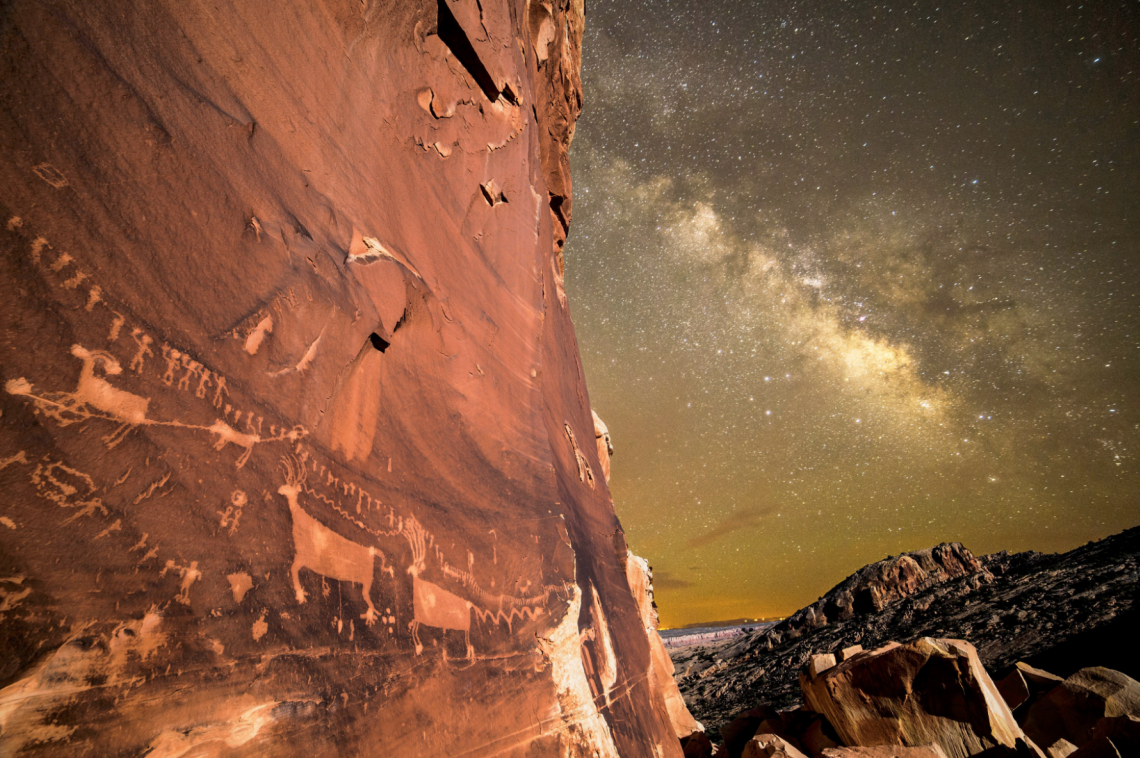
Environmental sustainability is at its root about the health, safety, and long-term integrity of the places where we all live, work, and play. We are increasingly realizing that sustainability isn’t the purview of a single sector working in isolation, but a shared responsibility for changing how we live in relation to our natural environment and to each other. Environmental leaders fully recognize this, and are eagerly looking for new ideas, partners, methods, and tools that can help propel the social, cultural, economic, political, and physical changes we need to get us where we need to go.
It is with this in mind that we are thrilled to release the fourth in ArtPlace’s series of cross-sector research efforts, Farther, Faster, Together: How Arts and Culture Can Accelerate Environmental Progress. The goal of this field scan is to better understand how place-based arts and cultural interventions, or “creative placemaking,” are advancing sustainability outcomes for communities.
Helicon’s process, as the researchers for this effort, involved a literature review of over 500 academic and non-academic sources; analysis of over 100 environmentally related art and culture projects across the United States; in-depth interviews with 37 field leaders; and a working group of 26 people convened in partnership with ArtPlace, Grist and the Sierra Club.
Our investigation covered the environmental areas of energy, water, land, waste, toxic pollution, and climate resilience and adaptation. Regardless of the specific issue, we heard repeatedly about five priorities that environmental sector leaders believe will either drive progress or hinder it if neglected. We found that arts and cultural approaches can radically amplify and accelerate progress in these same five areas, as outlined below.
Five ways the arts can help the environment
1. Spark public demand
Public demand sets social norms and drives business and political actions. Environmental leaders agree that the lack of strong public will for change is one of the most significant barriers to progress.
Art and culture can help build spark public demand by…
- Making environmental issues personal, emotional and salient
- Showing people what sustainability can actually look and feel like so that people want to move towards it
2. Build community capacity and agency
Addressing the disproportionate environmental harms borne by lower-income communities and communities of color, and ensuring that these communities are beneficiaries and agents of interventions, is critical to ensuring that the future is both more sustainable and more just.
Art and culture can help build community capacity and agency by…
- Building the community cohesion, identity, power and leadership needed to guide change
- Creating inclusive processes that enable dialogue between “experts” and community members, and the co-creation of solutions by them
3. Bridge scales
Environmental issues often touch the ground in distinctly local ways, but progress often requires thinking and acting at a range of scales—from the hyper-local to the ecological scales of the watershed, food shed, or species range.
Art and culture can help bridge scales by…
- Putting what happens at the local level into a larger context
- Helping people see and align toward common goals across political, geographical and ideological boundaries
4. Enrich and activate the built environment
Massive investments are needed to create new and more sustainable infrastructure over the next decade. This is both a challenge and an exciting opportunity to create physical environments that contribute to quality of life across many dimensions.
Art and culture can help enrich and activate the built environment by…
- Creating infrastructure that meets people’s social, aesthetic, and spiritual needs
- Designing physical spaces that cue and reinforce new and more sustainable thinking and behavior
5. Nurture sustainable economies
Many of the drivers of our environmental problems are rooted in the structure of our economy. Environmental leaders argue that economic incentives need to shift to promote more sustainable behavior, and that we must pro-actively nurture economically viable alternatives to replace environmentally harmful industries and practices.
Art and culture can help nurture sustainable communities by…
- Generating, revealing or redefining value
- Creating new business models that are both environmentally and economically sustainable, and enabling them to spread
To learn more, download the field scan or check out the creative placemaking case studies that illustrate the five environmental priorities described here. Stay tuned for a Live Facebook Chat in early March where we will answer questions about the research findings, and chat with artists who are leading this kind of work.





